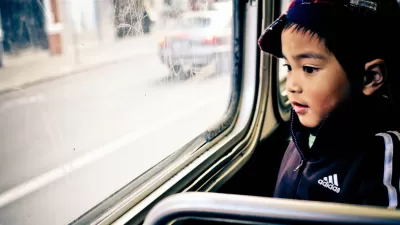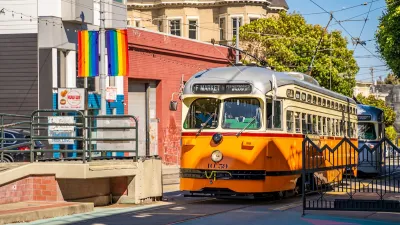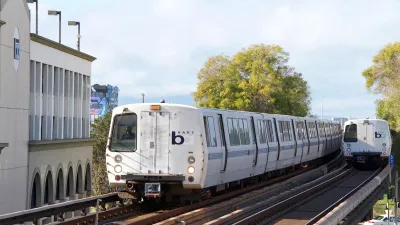In Minneapolis and San Francisco, public transit agencies are considering loyalty programs to boost ridership.

Sallie Burnett, business consultant, argues that loyalty programs like those used by airlines, hotels, and other businesses could help increase transit ridership. She points to what she sees as successful pilot programs in Minneapolis and San Francisco. "One example is Minnesota's Ride to Rewards programs, the first public transit frequent rider program in the nation," Burnett writes in Forbes. 80% of participants in that program said the perks they accrued riding transit would make them more likely to ride in the future.
Rewards programs could also be used to shift demand, "BART Perks was a test program conducted in the Bay Area that experimented with offering customers rewards for using transit outside of peak travel times. It lasted six months and encouraged participants to shift their commute away from the peak time of 7:30 a.m. Nearly twice as many people signed up than predicted," Burnett writes. The program also had the secondary benefit of getting people to post about their commutes on social media pages. Connecticut and Nashville transit agencies have also experimented with loyalty programs.
Burnett think the industry has an opportunity to take advantage of a tactic that, when properly implemented, has proven in other industries to be successful.
FULL STORY: Can Loyalty Programs Reverse Declining Public Transit Ridership?

Study: Maui’s Plan to Convert Vacation Rentals to Long-Term Housing Could Cause Nearly $1 Billion Economic Loss
The plan would reduce visitor accommodation by 25,% resulting in 1,900 jobs lost.

North Texas Transit Leaders Tout Benefits of TOD for Growing Region
At a summit focused on transit-oriented development, policymakers discussed how North Texas’ expanded light rail system can serve as a tool for economic growth.

Why Should We Subsidize Public Transportation?
Many public transit agencies face financial stress due to rising costs, declining fare revenue, and declining subsidies. Transit advocates must provide a strong business case for increasing public transit funding.

How to Make US Trains Faster
Changes to boarding platforms and a switch to electric trains could improve U.S. passenger rail service without the added cost of high-speed rail.

Columbia’s Revitalized ‘Loop’ Is a Hub for Local Entrepreneurs
A focus on small businesses is helping a commercial corridor in Columbia, Missouri thrive.

Invasive Insect Threatens Minnesota’s Ash Forests
The Emerald Ash Borer is a rapidly spreading invasive pest threatening Minnesota’s ash trees, and homeowners are encouraged to plant diverse replacement species, avoid moving ash firewood, and monitor for signs of infestation.
Urban Design for Planners 1: Software Tools
This six-course series explores essential urban design concepts using open source software and equips planners with the tools they need to participate fully in the urban design process.
Planning for Universal Design
Learn the tools for implementing Universal Design in planning regulations.
City of Santa Clarita
Ascent Environmental
Institute for Housing and Urban Development Studies (IHS)
City of Grandview
Harvard GSD Executive Education
Toledo-Lucas County Plan Commissions
Salt Lake City
NYU Wagner Graduate School of Public Service





























